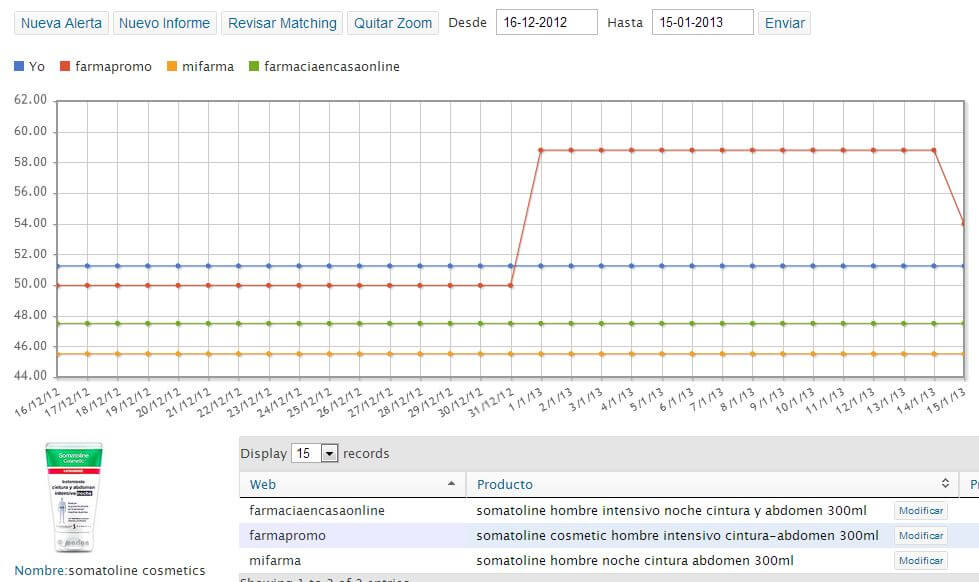

When it comes to choose an ecommerce price monitoring software, we must take into account certain aspects which assure power, scalability and information quality. Here you are five points to assess in order to take the right decision:
1. Scalability: will the tool resist monitoring thousands of products and tens of competitors? The tool must allow our commerce growth, and not become outdated overtime.
2. On the cloud: desk top solutions are no longer adequate because of its low power and also because our queries may be detected by the competition. We must relocate our tool in order to keep our IP in secret, so competition remains unable to detect who´s monitoring its prices.
3. True and updated information: Prices must be updated daily and the price shown by the tool must coincide with the price published on the competitor´s web site.
4. Right Matching: It´s useless to monitor two products if they are different. The tool must link client product with its equal in the competitors. This is one of the main features which are not found in the majority of price monitoring tools.
5. API Access: The tool must have connectors in which synchronize the client ERP and the monitored data. By doing so, price, competition and product automated queries can be performed from the ERP
We invite you to test our free competitors price monitoring demo. We are specialist on Ecommerce price optimization and setting.
Find out how Minderest can take your business to the next level.
Contact our pricing experts to see the platform in action.
Related Articles

AI Agents and Holiday Season: How to Adapt Your Pricing Strategy
Holiday season planning used to revolve around creative campaigns, emotional storytelling, and optimizing the user experience. However, a silent revolution is changing the rules of the game. The rise...
How Surveillance Pricing Works and Its Applications for Your Business
The term "Surveillance Pricing" might conjure images of corporate espionage and price manipulation. However, this initial perception hides one of the most sophisticated and powerful strategies in...